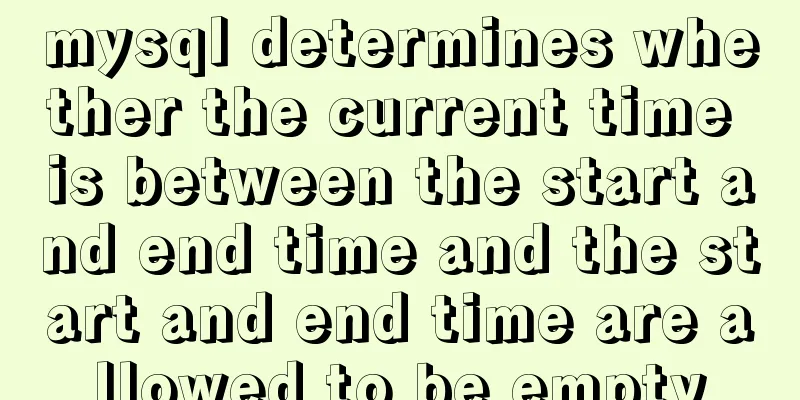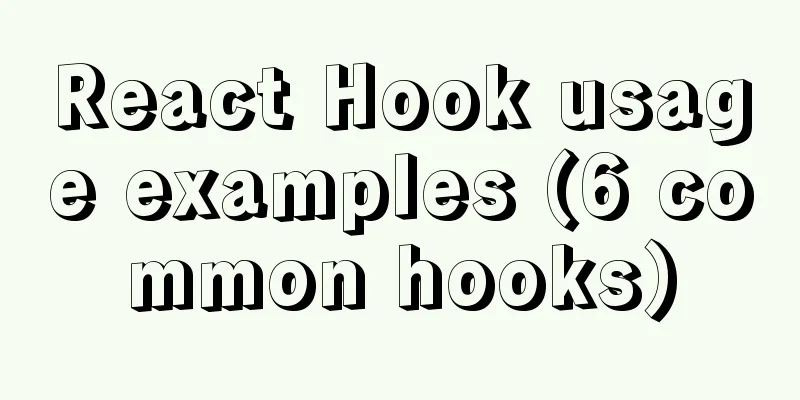JavaScript code to achieve a simple calendar effect

|
This article shares the specific code for JavaScript to achieve a simple calendar effect for your reference. The specific content is as follows The effect is as follows:
Code:
<!DOCTYPE html>
<html lang="en">
<head>
<meta charset="UTF-8">
<meta http-equiv="X-UA-Compatible" content="IE=edge">
<meta name="viewport" content="width=device-width, initial-scale=1.0">
<title>Document</title>
<style>
* {
margin: 0;
padding: 0;
box-sizing: border-box;
}
#box {
width: 400px;
height: 502px;
border: 2px solid orange;
margin: 50px auto;
font-size: 48px;
text-align: center;
}
#ym {
height: 100px;
line-height: 100px;
}
#d {
height: 200px;
line-height: 200px;
background-color: orange;
font-size: 72px;
}
#w {
height: 100px;
line-height: 100px;
}
#hms {
height: 100px;
line-height: 100px;
}
</style>
</head>
<body>
<div id="box">
<div id="ym"></div>
<div id="d"></div>
<div id="w"></div>
<div id="hms"></div>
</div>
<script>
//Call the getDateAndTime method getDateAndTime();
//Start the timer and call the getDateAndTime method window.setInterval(getDateAndTime, 1000);
function getDateAndTime() {
//Get the current date and time of the system var date = new Date();
//Extract the elements of date and time var year = date.getFullYear();
var month = date.getMonth() + 1;
var day = date.getDate();
var week = date.getDay();
var hour = date.getHours();
var minute = date.getMinutes();
var second = date.getSeconds();
//Process the week format switch (week) {
case 0:
week = 'Sunday';
break;
case 1:
week = 'Monday';
break;
case 2:
week = 'Tuesday';
break;
case 3:
week = 'Wednesday';
break;
case 4:
week = 'Thursday';
break;
case 5:
week = 'Friday';
break;
case 6:
week = 'Saturday';
break;
}
//Define function to process the format of hours, minutes and seconds function formatHMS(time) {
if (time < 10) {
return '0' + time;
} else {
return time;
}
}
//Get the page element var ym = document.getElementById('ym');
var d = document.getElementById('d');
var w = document.getElementById('w');
var hms = document.getElementById('hms');
//Write the date and time to the page ym.innerHTML = year + 'year' + month + 'month';
d.innerHTML = day;
w.innerHTML = week;
hms.innerHTML = hour + 'hour' + minute + 'minute' + second + 'second';
}
</script>
</body>
</html>The above is the full content of this article. I hope it will be helpful for everyone’s study. I also hope that everyone will support 123WORDPRESS.COM. You may also be interested in:
|
<<: Solution to MySql Error 1698 (28000)
>>: MySQL password modification example detailed explanation
Recommend
Design Theory: A Method to Understand People's Hearts
<br />Once, Foyin and Mr. Dongpo were chatti...
JavaScript function call classic example code
Table of contents JavaScript function call classi...
Discussion on default margin and padding values of common elements
Today we discussed the issue of what the margin v...
Solve the problem that Mysql5.7.17 fails to install and start under Windows
Install MySQL for the first time on your machine....
10 excellent Web UI libraries/frameworks
1. IT Mill Toolkit IT Mill Toolkit is an open sou...
JavaScript ECharts Usage Explanation
I used ECharts when doing a project before. Today...
HTML table tag tutorial (34): row span attribute ROWSPAN
In a complex table structure, some cells span mul...
Solution to the problem of Windows Server 2008 r2 server automatically restarting for no reason
Windows Server 2008 server automatically restarts...
How to create and run a Django project in Ubuntu 16.04 under Python 3
Step 1: Create a Django project Open the terminal...
How does the composite index of MySQL take effect?
Table of contents background Understanding compos...
ie filter collection
IE gave us a headache in the early stages of deve...
How to use Web front-end vector icons
Preface When writing front-end pages, we often us...
Detailed explanation of js event delegation
1. Each function is an object and occupies memory...
Detailed explanation of the problem of CSS class names
The following CSS class names starting with a num...
Javascript uses the integrity attribute for security verification
Table of contents 1. Import files using script ta...










